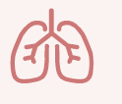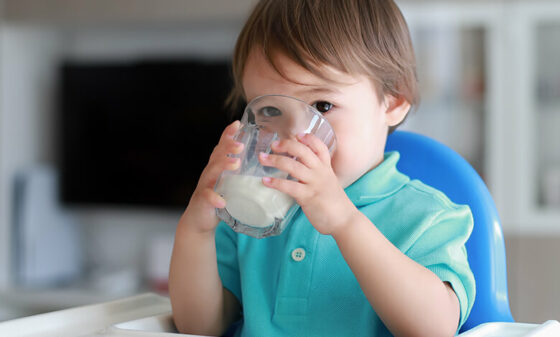Could your child be allergic to cow's milk protein?

Key takeaways
- Cow’s milk protein is one of the most common causes of food allergy in children1
- Cow’s milk protein (dairy) allergy is not the same as having lactose intolerance
- Most children outgrow cow’s milk protein allergy between 3–5 years of age2
- Allergy symptoms can appear on the skin, in the gut and/or respiratory system
- Removing all dairy products, including cow’s milk, from their diet may help with initial management of the food allergy and should be done in consultation with their healthcare professional
- Finding appropriate substitutions for cow’s milk and dairy products is important to help your child to meet their energy and nutritional needs
Cow’s milk protein is one of the most common causes of food allergy in children. In fact, around 1 in 50 children in Australia and New Zealand are allergic to cow’s milk protein.1 This article provides answers to common questions about the causes of cow’s milk protein allergy, the symptoms to look for, how it’s diagnosed, and steps you can take to manage cow’s milk protein allergy while still ensuring your child gets the nutrition they need.
What causes cows’ milk allergy in children?
Cow’s milk allergy is caused by the immune system reacting to the protein found in cow’s milk and other dairy products. Infants with a family history of allergic disease are at higher risk of having cow’s milk protein allergy. Being allergic to cow’s milk protein is not the same as having lactose intolerance.
What are the symptoms of cow’s milk allergy in children?
Children who are allergic to cow’s milk protein may experience a variety of symptoms which can appear rapidly (usually around 15 minutes) or be delayed (2 or more hours) after exposure to milk or dairy products. There are 3 main types of cow’s milk protein allergy symptoms:

Skin symptoms e.g. itching, redness, raised and itchy rash or swelling

Gastrointestinal (gut) symptoms e.g. vomiting, diarrhoea or constipation, refusing food, tummy pain

Respiratory (airway) symptoms e.g. runny nose, wheezing, coughing or sneezing
Most children with cow’s milk allergy experience 2 or more of these symptoms.
For more information, see our article How to identify cows’ milk allergy in toddlers.
How do I know if my child has cow’s milk allergy?
If your child has some of the symptoms mentioned above, you should see your doctor. A cow’s milk protein allergy diagnosis should be made in consultation with a specialist paediatrician and/or clinical immunology/allergy specialist. Diagnosis of immediate allergic reactions is confirmed by your doctor after taking a medical history and using allergy tests, such as skin prick tests and blood tests. Diagnosis of delayed reactions cannot be confirmed with tests. Diagnosis of delayed reactions involves excluding cow’s milk and other dairy foods from the diet for a trial period to check for a clear symptom improvement followed by a planned reintroduction of cow’s milk and other dairy foods to confirm symptom reoccurrence and that a longer-term dairy free elimination diet is advised.
Will my child always be allergic to cow’s milk protein?
Fortunately, most children will outgrow cow’s milk protein allergy by the time they are 3–5 years of age.1 However, some children do not grow out of cow’s milk protein allergy.Because the majority of cow’s milk protein allergic babies outgrow this allergy, it is important to seek medical advice along the way.1 The reintroduction of cow’s milk protein will be important to see if tolerance has been developed and to ensure you are not unnecessarily excluding cow’s milk protein long term.
How is cow’s milk allergy managed?
Cow’s milk allergy in children is managed through the removal of cow’s milk and other dairy products from their diet and substituting them with non-dairy-based alternatives (see table below). Most children with cow’s milk protein allergy are also allergic to milks from other animals (e.g. goats or sheep) and products made from these milks.1
What foods can I give if my child is allergic to dairy?
Solids can be introduced at around six months of age, but not before four months, based on the child’s developmental readiness.2,3,4 Breast milk and/or infant formula feeding should continue. Cow’s milk for children over 1-2 years of age and other dairy products are an important source of energy, protein and calcium for growing children. The table shows common foods and drinks that contain cow’s milk and suggests appropriate non-diary food substitutions to provide your child with the energy and nutrients they need for growth and development.You may like to consult a dietitian for more practical advice about ensuring good nutrition for your child. Also, remember that milk or milk products are often found in unlikely products, so it’s important to carefully read all ingredient labels and avoid any foods that contain cow’s milk, unless otherwise advised by your healthcare professional.If your child has multiple food protein allergies (e.g. cow’s milk, rice, soy) we recommended you consult with your healthcare professional on appropriate alternatives. This list is not intended to be a substitute for medical advice.

Instead of cow’s milk infant formula
Use breast milk or appropriate formula, as advised by your child’s healthcare professional.Appropriate formulas may include:
- Extensively hydrolysed formula (EHF) is usually the first choice for infants with cow’s milk allergy
- Soy protein formula (for children over 6 months of age)
- Rice protein formula
- Amino acid based formula

Instead of cows’ milk (children over 2 years of age)
Use calcium fortified soy, rice, oat or nut-based drinks – choose one with more than 120 mg calcium per 100 mL.These may not be an adequate milk replacement for some young children, as they usually contain low levels of protein and fat. An advisory statement is included on the label if the product is not suitable for young children.

Instead of yoghurt
Use calcium fortified non-dairy yoghurts e.g. soy basedSome products contain a small amount of cow’s milk protein – check the label carefully.

Instead of cheese, sour cream
Use non-dairy cheese, soy based sour cream. Some products contain a small amount of cow’s milk protein – check the label carefully.

Instead of ice cream or dairy-based frozen desserts
Use soy ice cream, sorbet, milk-free gelato. Some products contain a small amount of cow’s milk protein – check the label carefully.
Instead of butter & margarine
Use plant-based oil or milk-free margarine

Instead of cream & condensed milk
Use soy cream, soy cooking milk, soy condensed milk, rice cream

Instead of chocolate
Use soy or rice-based (milk free) chocolate
Adapted from ASCIA, Dietary avoidance – cows’ milk protein allergy. Visit www.allergy.org.au/patients/food-allergy
Do I need to avoid cow’s milk if I’m breastfeeding?
In some situations, mothers who are breastfeeding a child with cow’s milk protein allergy may also need to remove cow’s milk and other dairy products from their own diets. However, you should seek advice from a healthcare professional before removing milk and dairy products from your own diet. In addition, the support of a dietitian is recommended for more practical advice about ensuring good nutrition for you.
REMEMBER:
If you have any questions or concerns about cows’ milk allergy, please speak to a healthcare professional, like a Pharmacist, GP or Maternal Child Health Nurse.
References:
- Australian Society Clinical Immunology Allergy. ASCIA. (2019) Cow’s milk (dairy) allergy. (accessed 2022 June 28) http://www.allergy.org.au/patients/food-allergy/cows-milk-dairy-allergy
- Nipping allergies in the bud. 2022. (accessed 2022 June 28) https://preventallergies.org.au/introducing-solid-foods/babies-with-existing-allergy-of-family-history/.
- Australian Society Clinical Immunology and Allergy. ASCIA. (2020) Guidelines for infant feeding and allergy prevention. (accessed 2022 June 28) https://www.allergy.org.au/hp/papers/infant-feeding-and-allergy-prevention/
- Nipping allergies in the bud. 2022. (accessed 2022 June 28) Introducing solid foods. https://preventallergies.org.au/introducing-solid-foods/
If you're returning to work, let us help you return with confidence.
Our newsletter has tools, tips and expert advice to help ensure you and your child are ready.
Returning to work?
Sign-up to receive practical tips and advice for a smooth transition back to work.



